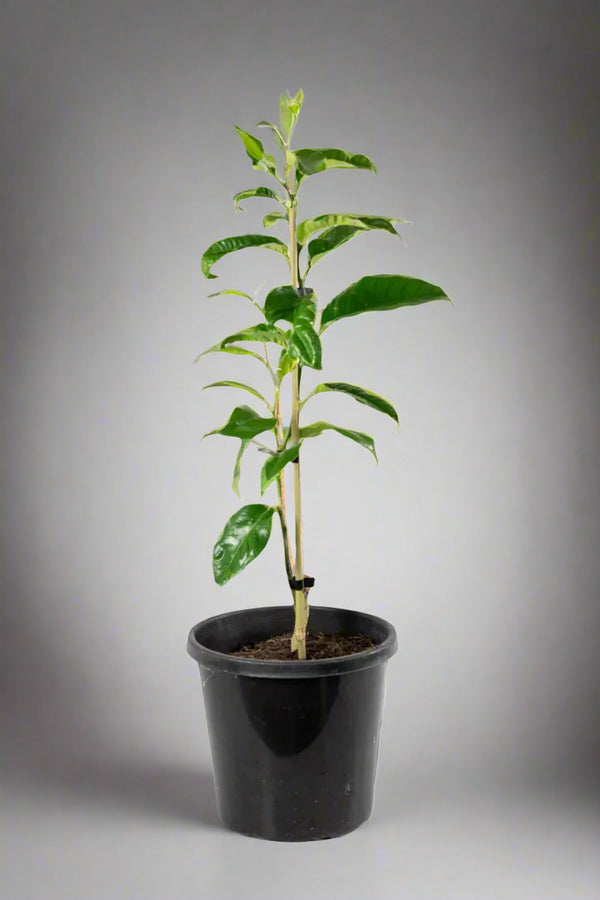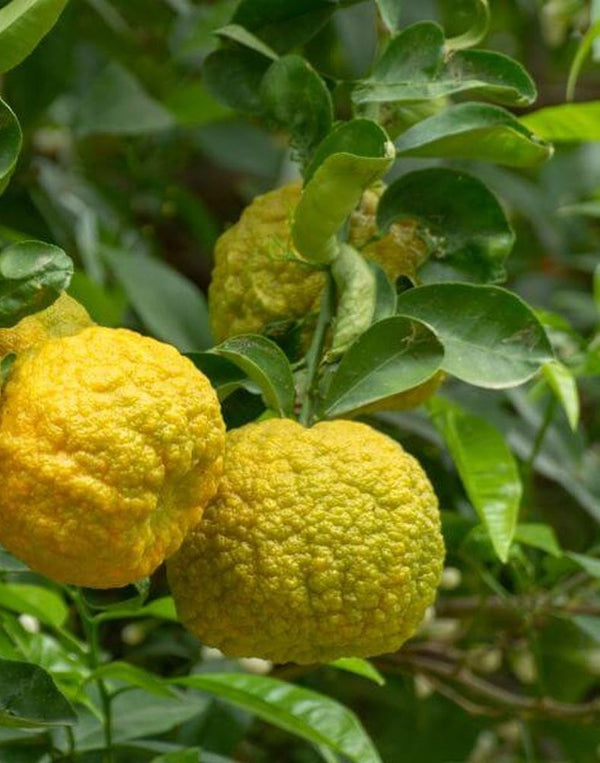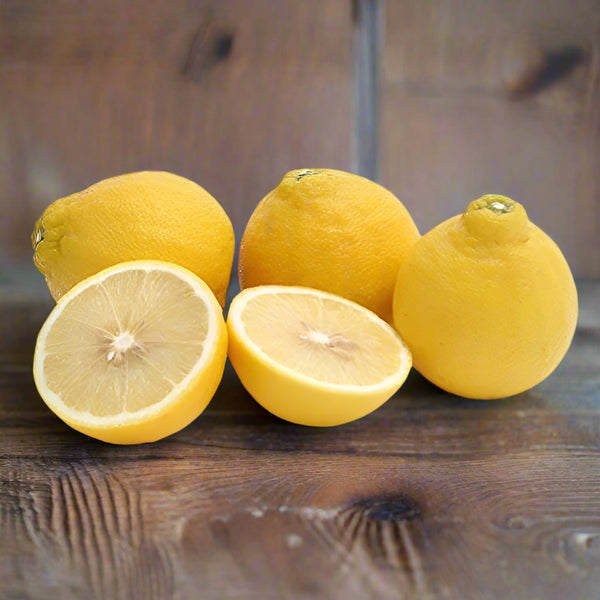
Bergamot Sour Orange Tree
Tax included
Shipping calculated at checkout
Please note: OurEstablished Range, Medium Standard Range (14L pot), andTall Standard Range trees are available for pickup only, as their size exceeds standard courier limits.
Bergamot is famous for giving Earl Grey tea its distinctive taste and aroma. Less well known is its use in the perfume and cosmetic industries. It is all thanks to the oils located in the peel. The aromatic peel is bursting with a complex scent that blends citrusy notes with a touch of floral and pepper. When I smell Bergamot, I think of sunshine, lemons, and a hint of lavender.
Bergamot fruits are smaller than regular oranges, with bumpy rinds and a greenish-yellow hue. You can zest the rind while still green, but for the fullest flavour and oil content, wait until the rind turns yellow. The possibilities are endless! Zest your bergamot for teas, desserts, and marinades. Infuse oils and vinegars with its unique aroma. Experiment with marmalades and even homemade liqueurs and gin. One of our favourite ways to use Bergamot is to add a dehydrated slice to a cup of tea. So much nicer than a bought Earl Grey Tea.
The juice has its own appeal. It's tart and acidic, adding a vibrant zing to marmalades, vinaigrettes, and even cocktails.
Bergamot orange trees love warmth and sunshine, thriving in Mediterranean-like climates. They need well-draining soil rich in organic matter. Consider raised beds or amending the soil with sand and compost for optimal drainage. In colder regions, provide protection from frost for young trees. Be patient! Bergamot trees typically take 4-5 years to mature and start producing fruits.
|
Names |
Bergamot, Bergamot sour orange, Citrus bergamia, Citrus aurantium subsp. bergamia |
|
Origin |
Originally from Southeast Asia. 80% of commercial Bergamot is grown in Calabria Italy. |
|
Mature Size |
3m |
|
Foliage |
Dark green leaves. White flowers |
|
Soil |
Well-Drained Soil is Key. Heavy clay soils are a no-go. |
|
Position |
Choose a spot that receives at least 6 hours of direct sunlight and protects the tree from strong winds. |
|
Flavour |
Tart and acidic juice. Peel is citrusy with floral and pepper notes. |
|
Fruiting
|
Ripens in the winter months and are ready to be harvested between May-September. When their skin has turned a lemon-yellow colour, you can pick the fruit. |
|
Fruit Uses |
Make teas, gin, liqueurs, oils, dressings, marinades, marmalades. |





